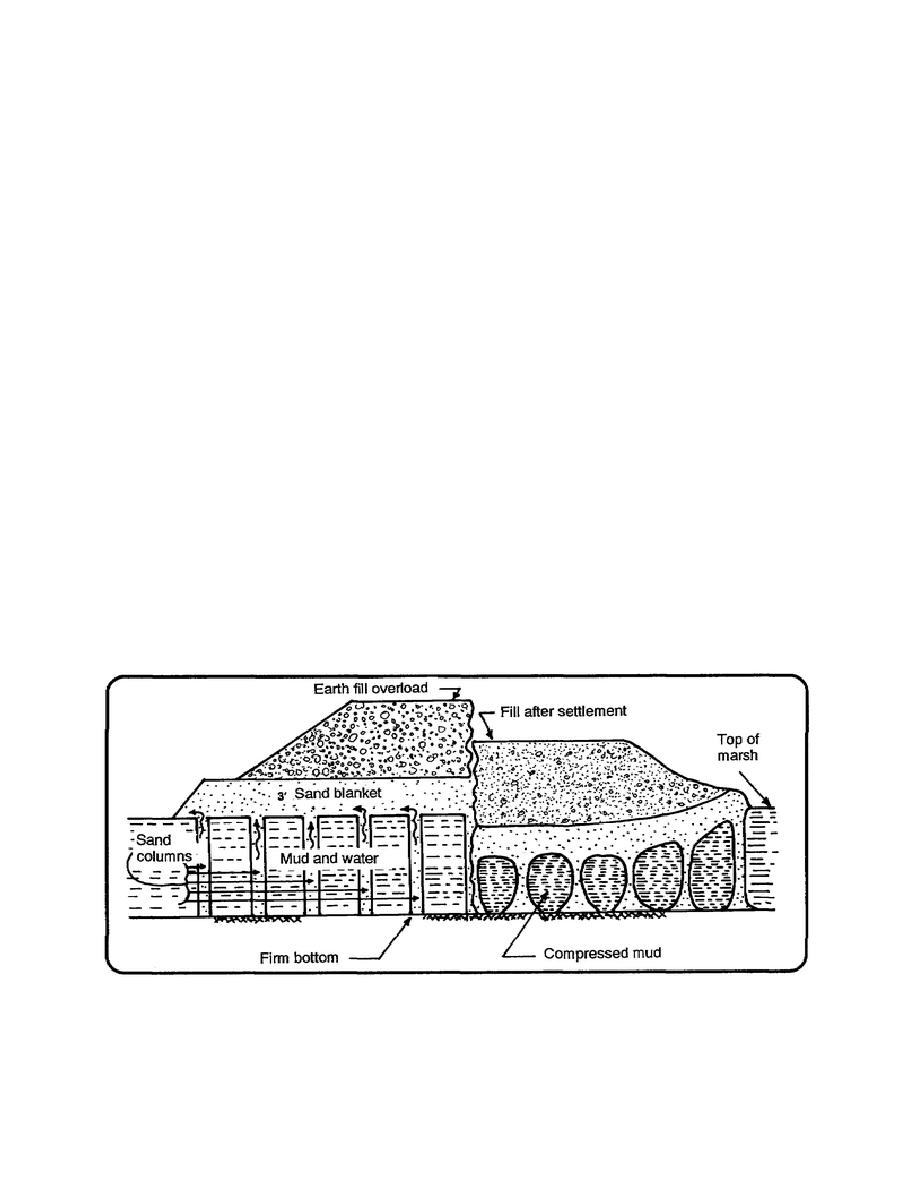
DEEP DITCH
Where ditches will not interfere with operations or become a hazard to traffic, deep V-ditches with free outfall
may be feasible. These ditches are easily built and readily enlarged. They provide positive interception and
drainage of subsurface water before the water reaches the area to be protected. Erosion and subsequent
maintenance are problems to be considered together with right-of-way and traffic problems.
FRENCH DRAINS
French drains are constructed by filling a ditch or trench with broken or crushed rock. The top surface of the rock
may be left exposed so the trench will act as a combination drain or the rock may be covered by a relatively
impervious soil so that no surface water can penetrate. The latter is the general practice. In general, French
drains are not recommended for permanent construction because they have a tendency to silt up with prolonged
use. In TO construction, such drains are often used as a substitute for perforated or open joint pipes because of
logistical limitations on piping or on filter materials suitable for use with such piping.
VERTICAL WELLS
Vertical wells are sometimes constructed to permit trapped subsurface water to pass through an impervious soil or
rock layer to a lower, freely draining layer of soil. If drainage is obstructed, additional wells e driven, or the
pocket is drained with an easily maintained lateral subdrain system. Vertical wells are often used in northern
latitudes, where deep freezing is common, to permit fast runoff from melting snow to get through the frozen soil
and reach a pervious stratum. Under such conditions the bottom of these wells are treated with calcium chloride
or a layer of hay to prevent freezing.
SAND BLANKET
The sand blanket method of controlling subsurface erosion works by reducing the time of flow. Sand is placed in
vertical columns dug into a marshy or muddy base. The whole area is then covered with a blanket of sand on
which the roadway fill is placed. Figure 6-4 illustrates the sand blanket method before and after settlement.
Figure 6-4. Sand blanket method
6-7
EN5465


 Previous Page
Previous Page
